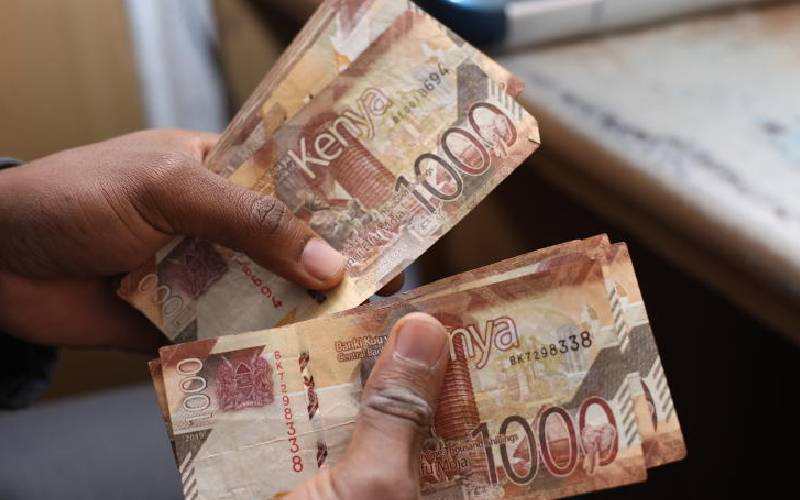The public and private sectors borrowed Sh452.87 billion last year to push the amount they owe banks to Sh2.799 trillion, latest 2016 Economic Survey data shows.
The credit, which is 19.3 per cent more compared to Sh2.34 trillion borrowed in 2014, was mainly driven by increased borrowing by national government and some businesses in the private sector.
The Government had borrowed Sh553.3 billion from commercial banks as at December 2015, which is 24.5 per cent more than Sh444.5 credit in 2014. Of this amount, county governments borrowed 313.3 per cent more (Sh1.15 billion) up from Sh278 million. According to the latest Economic Survey released yesterday by Kenya National Bureau of Statistics, the Government’s share of total credit increased from 16.9 per cent in 2014 to 18.1 per cent last year.
The Government’s increased borrowing from the domestic market has the effect of crowding out the private sector since banks prefer to lend to the State. This is because Government’s risk of default is so remote.
The private sector borrowed Sh1.79 trillion in the 12-month period to December 2015. This was a 22.1 per cent growth compared to Sh1.47 billion in 2014. This was driven by building and construction and wholesale, retail and hospitality businesses.
“The sector which recorded the highest percentage increase in uptake of credit was building and construction, recording 32.2 per cent increase in December 2015 compared to 13.6 per cent increase in a similar period in 2014,” notes the survey.
The survey also notes that this sector registered a growth of 13.6 per cent compared to an expansion of 13.1 per cent recorded in 2014. In the process, the sector created 148,000 jobs last year up from 132,900 created in 2014.
Wholesale and retail trade, hotels and restaurants took up 21 per cent of the total credit in the private sector while manufacturing sector borrowed Sh290 billion. In 2014, it had borrowed Sh237.4 billion.
The increased borrowing saw manufacturing sector expand by 3.5 per cent compared to 3.2 per cent in the previous year. Despite being affected by cheap imports and lack of incentives due to delayed Value Added Tax (VAT) refunds, the value of manufacturing projects almost doubled to hit Sh1.09 billion from Sh569 million in 2014.
Credit to the mining and quarrying sector declined for the second year running to stand at Sh20.8 billion from Sh23.4 billion in 2014. Since 2011, the highest credit to the sector was Sh27.8 billion in 2013.
“The advances to deposit ratio improved from 83 per cent in December 2014 to 86.3 per cent in December 2015 reflecting increased uptake of loans issued by commercial banks,” said the survey
Against this overall increased appetite for credit across sectors, there was mixed performance of increases and dips in most nominal interest rates during 2015. During the year, Central Bank of Kenya revised benchmark lending rate to 10 per cent and 11.5 per cent in June and December 2015.
Commercial banks echoed these oscillations by driving interests on loans and advances up to 17.5 per cent in December from 15.99 per cent in December 2014. However, real interest rate for loans and advances, which is usually nominal interest adjusted for inflation, dipped slightly to 9.44 per cent in 2015 from 9.97 per cent in 2014.
This means that in real terms, despite the cost of borrowing going up, the easing inflation lessened the pain of borrowing. In the same year, the ratio of liquid assets to deposit liabilities of commercial banks improved to 44.1 per cent in December compared to 38.8 per cent in 2014.
Despite the increased liquidity, inter-bank lending rates rose in June last year to 11.78 per cent from 6.91 per cent in December 2014. However, it eased to 7.27 per cent by close of 2015.
Stay informed. Subscribe to our newsletter
 The Standard Group Plc is a
multi-media organization with investments in media platforms spanning newspaper
print operations, television, radio broadcasting, digital and online services. The
Standard Group is recognized as a leading multi-media house in Kenya with a key
influence in matters of national and international interest.
The Standard Group Plc is a
multi-media organization with investments in media platforms spanning newspaper
print operations, television, radio broadcasting, digital and online services. The
Standard Group is recognized as a leading multi-media house in Kenya with a key
influence in matters of national and international interest.
 The Standard Group Plc is a
multi-media organization with investments in media platforms spanning newspaper
print operations, television, radio broadcasting, digital and online services. The
Standard Group is recognized as a leading multi-media house in Kenya with a key
influence in matters of national and international interest.
The Standard Group Plc is a
multi-media organization with investments in media platforms spanning newspaper
print operations, television, radio broadcasting, digital and online services. The
Standard Group is recognized as a leading multi-media house in Kenya with a key
influence in matters of national and international interest.








